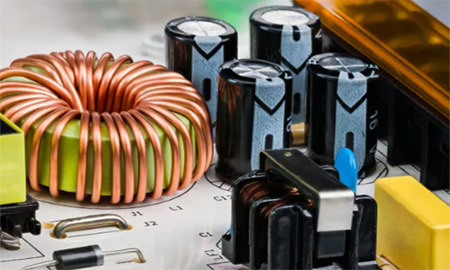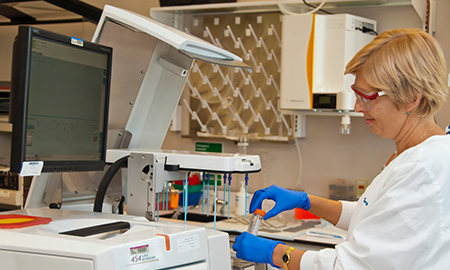A transformer is an electrical device used to transfer electrical energy from one circuit to another through electromagnetic induction. Transformers are used to change the voltage levels of alternating current (AC) power in electrical systems, making it possible to transmit electricity over long distances with minimal loss of energy. Transformers consist of two coils of wire, a primary coil and a secondary coil, that are separated by an insulating material. The alternating current flowing through the primary coil induces a magnetic field that in turn induces a voltage in the secondary coil, resulting in a transfer of energy from one circuit to another. Transformers are used to change AC voltage levels, such transformers being termed step up or step down type to increase or decrease voltage level.
Power transformer is an essential part of modern electrical power distribution systems. It helps to transmit and distribute power efficiently and safely over long distances, powering everything from homes and businesses to hospitals and factories. Without transformer, it would be impossible to transmit electricity at high voltages over long distances, which would significantly limit the reach of the power grid and increase the cost of electricity. In the following are the applications of step up and step down transformer.
For Marine Application
Nowadays electric propulsion with gas turbine or diesel engine driven power generation is used in hundreds of ships of various types and in a large variety of configurations. Azimuthing thrusters and podded thrust units, propulsion configurations for transit, maneuvering and station keeping have merged in several types of vessels in order to utilize installed thrust units for optimal transit, maneuvering and dynamic positioning.In the absence of an isolation transformer, there is a direct connection between the grounding of the dock and the ship's electrical system. A loose wire on the ship may cause a fault current to flow through the hull into the water and back to shore, making it dangerous for those working at the dock. With an isolation transformer, the power is transmitted to the boat through the magnetic field in the core. There is no direct connection. The shore power grounding terminal is connected to the transformer's shield, creating a new ground for the ship. There is no connection between the two grounds, so fault currents do not flow between them.
Another potential hazard addressed by the isolation transformer is polarization. If the shore power line is replaced with a cold wire, your power on/off switch may not disconnect the power to the equipment. Otherwise it may cause the normally grounded enclosure to heat up. The magnetic field of the transformer core protects you as well as the shore exchange wires from causing the exchange polarization on board. The second benefit is that isolation transformers also protect against galvanic corrosion. The same isolation characteristics that separate your boat from the dock prevent the current from eroding your zincs, or other expensive metal parts of your boat. That's why every shore power system distribution cabinet contains an isolation transformer.
UPS System
In power transformer based UPS system, the transformer works to step up the voltage at the inverter output, bringing it to a level that is compatible to generator supply voltage or the utility. However, the power transformer is not exactly used to provide galvanic isolation. In case a total galvanic isolation is needed, in an isolation transformer UPS or a transformer-less UPS, an additional transformer is required in the circuit. This also helps prevent a net DC output component.Transformers excel at identifying patterns and detecting anomalies in data. During real-time operation, the transformer can compare incoming power measurements with its learned knowledge and identify any deviations or anomalies that may indicate a fault or impending failure. This early detection can help in preventive maintenance and reduce downtime.
Electrical transformers can be used to optimize the control strategies of UPS systems. By taking inputs such as load demand, battery status, and environmental conditions, a transformer-based control system can make intelligent decisions on how to allocate power resources efficiently. This includes dynamically adjusting battery charging/discharging rates, optimizing energy usage, and ensuring a smooth transition between different power sources.
Power Generation and Transmission
Perfect transformer solutions for power plants are available. It is used in power plants to increase the voltage of electricity produced by the plant before sending it to the grid and is also used in transmission and distribution to increase or decrease the voltage of the electricity delivered from the power plant to homes and businesses.A power transformer is a commonly used electrical device that can convert AC power. A transformer converts one type of electrical energy (AC current, AC voltage) into another type of electrical energy (AC current, AC voltage with the same frequency). The role of transformers in practical applications is mainly to complete the transformation of voltage and make the transmission of electric energy more convenient. Transformers can be divided into step-down transformers and step-up transformers according to the ratio of output voltage to input voltage. A transformer whose output voltage to input voltage ratio is less than 1 is called a step-down transformer, and its main function is to provide the required voltage for various electrical equipment to ensure the supply of the required voltage for users. A transformer with a ratio of output voltage to input voltage greater than 1 is called a step-up transformer. Its main function is to reduce the cost of power transmission, reduce the loss in the process of power transmission, and increase the distance of power transmission.
When a short circuit occurs on the secondary side of the power transformer in the power system, it takes a certain amount of time from the short circuit to the tripping of the circuit breaker. During this period, the transformer winding still needs to withstand 20-30 times the magnitude of the steady-state current. The electric power in the short-circuit current impact winding is proportional to the square of the short-circuit current. If the transformer winding is not strong enough to withstand a short circuit, it will result in damage to the transformer winding. Therefore, it is particularly important to accurately check and reliably design the short-circuit capacity of the transformer in the design of the transformer.
Audio Systems and Electronics
We all know that transformers apply to electronic equipment including computers, televisions, radios and cell phones. In audio systems, transformers are utilized for signal isolation, impedance matching, and balanced audio transmission. They provide electrical isolation between components, reducing noise and interference in the audio signal. Transformers also match the impedance between devices, ensuring optimal power transfer and preventing signal degradation. Moreover, they play a crucial role in balanced audio transmission, separating the audio information from the ground reference, resulting in improved audio quality. Additionally, transformers are employed for voltage conversions, such as stepping up or stepping down voltage levels in amplifiers or power supply units. In electronic products, they are used for voltage conversion, transforming AC voltage to suitable levels required by electronic circuits. Transformers also play a role in power supply units, regulating the voltage and providing a stable power source for electronic devices. Moreover, transformers are employed in isolation devices to eliminate hum, buzz, or ground loop noise caused by electrical differences. They can be found in line-level isolators or audio ground isolators. Additionally, transformers are used in audio interfaces to match signal levels and impedance between different devices, ensuring compatibility and seamless integration. While advancements in digital signal processing have reduced the reliance on transformers in some areas, their unique characteristics and benefits continue to make them valuable in various audio equipment and electronic products.Electrolysis Process
Medical System
Step up and down transformers ensure electrical isolation, protect patients and medical personnel from electric shock, and also regulate and stabilize voltage. Additionally, they help minimize electrical noise and electromagnetic interference, maintain signal integrity in medical equipment, and provide backup power during power outages to maintain critical medical operations. From isolated power systems in operating rooms to imaging equipment such as X-ray machines and MRI scanners, transformers are an essential component for reliable and safe power distribution in medical systems.
Some of the most common applications for isolation power transformers include:
- MRI and computed tomography scanners
- Portable drug infusion controls, oxygen pumps and hospital beds
- Laboratory, ward monitoring equipment
- Triple magnetic label product series
Complex electronics sometimes generate stray electromagnetic fields that interfere with the performance of other electronics. Generally, power supply interference mainly includes working voltage reduction, tripping, frequency deviation, electrical equipment noise, surge protection, harmonic current and magnetic detection. This problem is especially common in confined spaces such as hospital wards and operating rooms. When the interference It can be even more dangerous when affecting delicate tools such as health monitoring equipment. The experimental equipment cannot work normally due to interference, and the damage to the system is getting worse. At this time, the isolation transformer can play its role, which can effectively prevent the impact and improve the stability of the experimental instrument, especially the anti-interference signal in the power plug.






